Tips To make Your Food Healthier!
Drumsticks Pods And Leaves Are Excellent Nutrition!
Drumstick Pods And Leaves Are Excellent Nutrition!
Drumstick pods provide only 37 calories, 8.5 gm carbohydrates, 2.10 gm proteins, 0.2 gm fats and 3.2 gm fibre.
Drumstick leaves provide 64 calories, 8.28 gm carbohydrates, 9.40 gm proteins, 1.40 gm fats and 2 gm fibre.
The drumstick pods are super rich in Vitamin C.
The leaves are very rich in Vitamins A, C and Pyridoxine and are rich in riboflavin and iron.
Dry powdered leaves are a very good source of good quality essential amino acids.
And both provide ample other vitamins and minerals.
Vitamin A plays a vital role in growth and development, cell recognition, eye health and vision, immune function and reproduction and is essential for the health of the skin, mucous membranes, teeth enamel and heart, lungs, and kidneys. It also functions as an antioxidant.
Vitamin C has a role to play in the immune function, cardiovascular health, health of the skin and the eyes and in preventing prenatal problems. It is thought to lessen the severity of respiratory infections and functions as a potent antioxidant.
Iron is essential for the formation of haemoglobin. Deficiency of iron causes anaemia, fatigue, lack of energy, lowered immunity and impaired cognitive development.
Pyridoxine (Vitamin B6) is needed to maintain the health of nerves, skin and red blood cells.
Riboflavin (Vitamin B2)is essential for many processes in the body and is necessary for normal cell growth and function.
Drumstick leaves are a powerhouse of antioxidants quercetin and chlorogenic acid. Drumstick leaves supplement are well-known to enhance blood antioxidant levels.
The ample vitamin and antioxidant activity provided by drumstick pods and leaves are attributed with various health benefits including regulation of blood pressure and blood sugar, prevention of hypertension, diabetes and heart disease, improvement in kidney and liver health, improvement in the health of women during pregnancy, prevention of foetal abnormalities and improvement of milk secretion in lactation, improvement in skin, prevention of acne, in sperm count in men and anti ageing benefits.
Overall, drumstick pods and liver are a super food combination.

Iron Rich Foods To Fight Anaemia
Iron is an important mineral that our body needs for various functions like oxygen and carbon dioxide transportation, metabolism, growth, normal cellular function, synthesis of hormones and connective tissue and DNA.
Deficiency of iron causes anaemia, fatigue, lack of energy, lowered immunity and impaired cognitive development.
We get iron from our food like most other nutrients.
Iron that we get from animal source foods is heme iron while that we get from vegetable source foods is of the non heme iron. The heme iron has greater bio availability, that is, it is better absorbed by our body than the non heme iron which has lower bio availability, that is, it not as well absorbed by our body as the heme iron.
That means even if the amount of iron present in the vegetable source foods is greater than that available in animal source food, the body utilities the animal source iron better.
The best sources of non heme iron are pulses like soya, peas, various beans and lentils (masur, matki, chavli, mug), most vegetables, especially leafy vegetables like spinach, fenugreek, amaranth and grains like rajgira and cereals like wheat, bajri etc. Fruits like dates, apricots, peaches, prunes, currants, raisins, pears, figs, apples are also good sources of iron.
Dark chocolate is also a good source of non heme iron.
Our bodies can utilise non heme iron better when we consume vegetable source iron rich foods along with Vitamin C rich foods. So including tomatoes and bell papers and citrus fruits and guavas in our food will help us utilities the non heme iron better. Indian goose berries and guavas are the richest sources of Vitamin C.
The best source of heme iron are animal liver and red meat. This heme iron is the best source of iron for us. The safest red meat to consume is goat meat, even better than poultry.
Shell fishes, oysters and also some other fish like tuna, salmon and crabs are also good sources of heme iron. Fishes with scaly skin are better sources of heme iron.
The richest source of iron are clams (‘tisrya’, a shell fish delicacy). They are also rich in Vitamins C and B12.
So for an ill, anaemic person with normal blood cholesterol levels, clams, goat meat, liver, oysters and fish could be the just be the best nutritional support on his or her way to recovery.
Apart from iron, we also need to include adequate Vitamin B12 and folate in our food to fight of anaemia.
The above animal source foods plus milk will also provide ample Vitamin B12 to such a diet.
Adding ample green leafy vegetables to food will add sufficient folate to such a diet, the other important nutrient that helps us fight off anaemia.

Ladies Finger, The Low Calorie, Healthy Vegetable!
Ladies finger or okra is a very low fat, low calorie, low glycemic index and very healthy vegetable.
It has only 7.5 gm carbohydrates, 2 gm proteins, 0.2 gm fat, 3.2 gm fibre and provides just 33 calories per 100 gm.
It is a rich source of fibre, Vitamin C and Vitamin K and a moderate source of thiamin, folate and magnesium.
Ladies finger is a source of antioxidants including phenolic compounds like catechins and quercetin. It is believed that these compounds may help lower the risk of cancer and have anti microbial and anti inflammatory properties.
It is also believed to have a beneficial effect on blood sugar, heart and bone health.
Lectin, a type of protein present in ladies finger is believed to protect us against some cancers.
Folate in ladies finger is also known to prevent miscarriages and foetal anomalies like spina bifida and anencephaly (failure of development of part or complete brain in a foetus).
Fibre is known to lower cholesterol and protect against development of heart disease, strokes and diabetes.
Vitamin K plays an important role in bone formation and blood clotting.
Vitamin C is necessary for the growth, development and repair of all body tissues, many body functions, including formation of collagen, absorption of iron, the immune system, wound healing, and the maintenance of cartilage, bones, and teeth and is also a potent antioxidant.

Brinjal, The Very Healthy, Low Calorie Vegetable!
Many people worry that brinjal (eggplant, aubergine) is a high calorie vegetable that will make them fat, but they don’t suspect that the ample groundnuts, coconut and oil that they add to the vegetable to make it ‘yummy’, that will make them fat!
It is a very low fat, low calorie, low glycemic index and very healthy vegetable.
It has only 8.73 gm carbohydrates, 0.23 gm fat, 2.5 gm fibre and provides just 24 calories per 100 gm.
It is rich in soluble fibre, which helps in lowering cholesterol.
It is rich in anthocyanins, the phenolic flavonide antioxidants those have a role in preventing ageing, some cancers, inflammation and neurological diseases.
It is a rich source of manganese, copper, iron and potassium.
It is also a good source of some B Complex vitamins like pantothenic acid (Vitamin B5), pyridoxine (Vitamin B6), thiamine (Vitamin B1) and niacin (Vitamin B3). They play an important role in fat, protein and carbohydrate metabolism.
Overall, it is a very healthy vegetable and even diabetics can eat it safely!

Healthy Foods For Fasts
Till today, many people observe fasts, some religiously observe multiple fasts every week or month, others fast on big religious days viz. Maha Shiv Ratra and Ashadhi Ekadashi! Some even observe prolonged fasts in Nav Ratra and Shravan!
But a few observe them on days like Ashadhi Ekadashi because they love the delicious fasting foods, viz. sabudana khichadi, sabudana wada, khamang kakdi, batatyacha kees, batatyachi upasachi bhaji, fried khajoor and the works!
And few stop to wonder which of the fasting foods are healthy, in fact most don’t care at all!
The healthy fasting foods are milk, fruits, rajgira, varyache tandul, cucumber, dates and shingada (water chestnuts).
Varyache tandul can be had as rice, without adding groundnuts and coconut and also it’s flour mixed with rajgira flour can be eaten as thalipith.
Rajgira can be also prepared as upama. Dates can be eaten without frying and shingada as a porridge with milk or shira.
Sweet potato, potato in moderation are also permissible.
Avoid sabudana khichadi, sabudana wada, fried dates and khamang kakdi with ample groundnuts and sugar and oil. Or at least don’t gorge of them, enjoying ’Ekadashi – Duppat khashi’.
Remember fasts were designed to give rest to our digestive system and train our minds to learn to exercise restraint in eating food, not to gorge!
****
Sago (sabudana) is bad nutrition. Provides about 85 gm carbohydrates and 350 calories per hundred gm of sago and very little nutrition other than that.
Avoid groundnuts, high fat (49% fat).
Avoid coconut, high fat (fresh coconut 33% fat and dry coconut 65% fat).

Don’t Throw Away The Leaves While Buying Radishes!
Radish roots, the part of the plant which we eat more often than the leafy part of the plant, come in a variety of types, shape, colour and taste. The type that we Indians eat commonly are the long, white ones.
They are very low in calories, provide just 16 calories per 100 gm, they are rich in Vitamin C and high in fibre. They also have small amounts of folate, riboflavin, niacin, Vitamins B6 and K, potassium, calcium and magnesium.
The leaves of the radish plant, which we most often ask the vegetable vendor to chop off and are consigned to his garbage can, are much richer in nutrition than the root we include in our food!
The radish leaves have much higher levels iron, calcium, potassium, phosphorus, folate, Vitamins A, C and B Complex and fibre than the radishes.
Radish leaves help build immunity, help treat fatigue, constipation and piles, jaundice, rheumatism, act as antiscorbutic (help prevent scurvy), diuretic and detoxing agent, help dissolve gall stones and renal stones, aid digestion, help prevent diabetes and some cancers.
They also have anti bacterial, anti fungal action and they are reported to be very effective in eliminating fungal vaginitis, a very troublesome vaginal infection experienced by many ladies.
They also have anti inflammatory action, hence also help fight coronary artery disease.
Many of these health benefits are common between radish root and leaves, but the leaves are much higher in nutrition and hence have more potent effect on our health than the roots.
And the leaves make as tasty a leafy vegetable as any you can have!
So the next time you buy radishes, don’t throw away the valuable leafy part of the plant, it is far more nutritious than the roots!

Dates: The Tonic For The Anaemic!
Dates are a wonderfully delicious fruit that provides us with an impressive array of vitamins, minerals and antioxidants those are essential for normal growth, development and overall well-being.
They are easily digestible and provide us quick energy through simple sugars like fructose and dextrose and about 277 calories per 100 gm of the fruit. That’s the reason why they are a popular fruit for ‘fasting’ days.
Dates are rich in fibre and thus act as a laxative. The fibre helps prevent LDL cholesterol absorption in the intestines, thus helping lower the bad cholesterol levels in the blood. Fibre also helps prevent many cancers.
Dates are also rich in a variety of the flavonoid antioxidants that have anti inflammatory, anti infective and anti carcinogenic properties and help prevent many cancers.
Dates are rich source of iron. Iron is an important component of haemoglobin in the red blood cells and deficiency of iron causes anaemia. Dates are a wonderful tonic for those people who are anaemic and run down, but can’t tolerate iron supplements. A handful of dates a day is just the iron tonic such people need!
Dates are also rich in potassium, calcium, manganese, copper and magnesium.
Potassium helps regulate our water balance and blood pressure, helps keep our nervous system, heart, kidneys healthy, helps prevent heart disease and strokes. It helps control anxiety and stress.
Calcium is the essential constituent of bone and teeth and is required by the body for muscle contraction, blood clotting, and nerve impulse conduction.
Manganese is essential for production of the antioxidant enzyme, superoxide dismutase, copper is essential for the production of red blood cells and magnesium is essential for bone growth.
Dates also provide fair amount of pyridoxine (vitamin B-6) and also provide other B Vitamins that are essential for carbohydrates, protein and fat metabolism and Vitamin K, which is essential for blood clotting and bone metabolism.
Thus dates are a treasure trove of nutrition. Add them to your regular food!
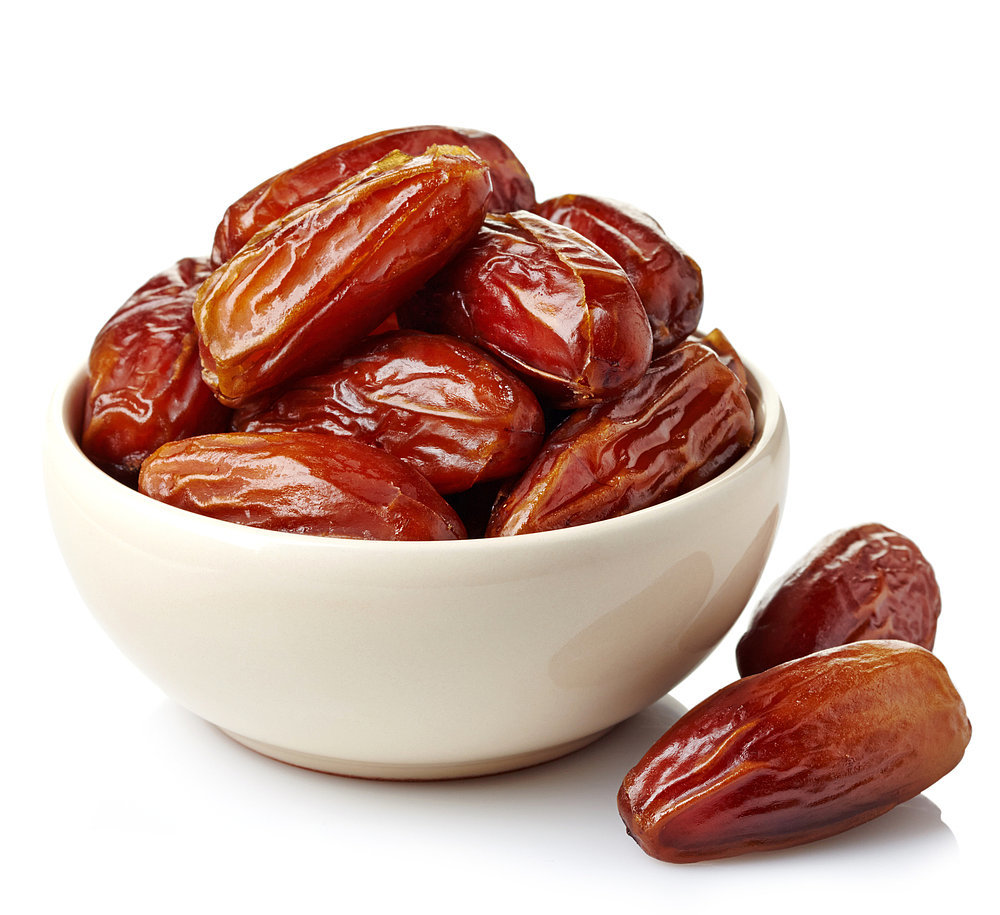
Health Benefits Of Isabgol!
Isabgol (Psyllium) Husk, botanical name Plantago Ovata, is the outer membranous covering of the Plantago Ovata seeds.
It is a rich source of fibre, being composed of 75 to 80 per cent of its weight by fibre, 55 to 60 per cent of which is soluble and 25 per cent, insoluble fibre. That means two teaspoon or 10 gm of the husk provides us with 7.5 to 8 gm soluble and 2.5 gm insoluble fibre.
Soluble fibre dissolves in water, forming a gel like substance that absorbs cholesterol and sugars and clears them out of our bowels, reducing their absorption in our blood stream, thus helping lower blood cholesterol, especially LDL, the bad cholesterol and sugar. Thus it helps lower the risk of diabetes, heart disease and strokes.
Insoluble fibre does not dissolve in water. It absorbs water, adds bulk, softens stools and speeds up it’s transit through the bowels and relieves constipation. It regulates bowel movement, promotes growth of useful bacteria in the bowels, regulates the pH in the bowels, helps eliminate toxins from the bowels and helps prevent colitis, haemorrhoids and colon cancer.
Women need between 21 to 25 and men need between 31 to 38 gm fibre daily. Four teaspoon isabgol a day could provide 15 to 16 gm fibre a day.
It might be a good idea to regularly take four teaspoon isabgol plus plenty of water to get good bowel movement and overcome constipation, help keep the intestinal tract and the heart healthy.
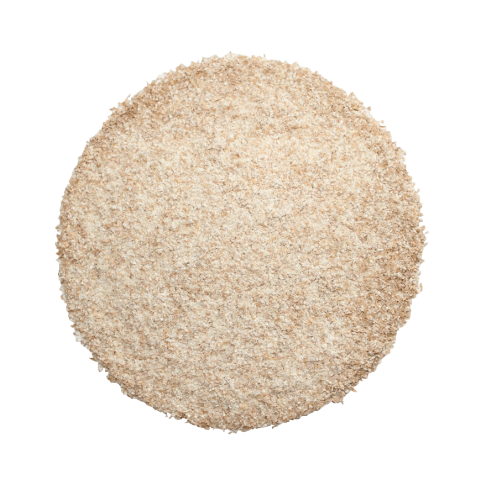
Is Paneer Good Or Bad For Your Weight?
Is Paneer Good Or Bad For Your Weight?
Most weight conscious people are confused if paneer is good or bad for their weight, largely because they constantly keep hearing contrary opinions. Some experts advice them not to eat both paneer and cheese, others say it is fine to eat paneer but not cheese.
So should you eat paneer or not?
The answer is simple.
We can have two kinds of paneer. One is the home made variety, made from cow milk after removing the cream from it and the other, the full cream commercial paneer available in the market.
The home made paneer has little fat as the cream (malai) is removed from the cow milk, which is already low in fat, while the full cream commercial paneer has between 25 to 27 per cent fat.
Thus the home made paneer is low in both fat and cholesterol. And it retains most of the goodness of the cow milk. So non fried, home made paneer made from fat removed cow milk is perfectly fine to eat, if you are a weight conscious person.
Most of the of the commercial paneer available in the market is full cream paneer and contains fat comparable to that in cheese (25 to 27 per cent in full cream paneer to a little over 34 per cent in cheese).
Thus the commercial, full cream paneer retains all the goodness of milk, plus all the fat and cholesterol in the milk and is best avoided by weight conscious people. Fried full cream paneer is even worse!
So the verdict is, eat non fried, home made paneer but avoid commercial, full cream paneer, whether fried or non fried, if you are weight conscious.

Fresh Fruits Vs Fruit Juices
Most people are confused about having fresh fruits and fruit juices. Many consider drinking fruit juices to be an option to eating fresh fruits.
Fruit juices, even if freshly made, even at home, are no match for fresh fruits, packaged once are far worse!
All fruits provide us with varying quantities of vitamins, minerals, antioxidants, fibre and fructose, the fruit sugar. Fibre in the fruits slows down the uptake of the fructose, hence it does not allow sudden spiking of your blood sugar, which is bad for the body. Plus the fibre also helps bowel movement and helps lower cholesterol. Fresh fruits also retain the Vitamin C in them completely, when we consume them.
Most of the fibre is removed when we extract juice from fruits. So when we consume fruit juices, there is also sudden spiking of your blood sugar, which does not happen when you consume whole fruits.
Most domestic and commercial juicers are high speed machines, which cause heating of the juice and this destroys most of the Vitamin C in the fruit. Slow speed juicers retain more of the Vitamin C than the high speed ones, but they are more expensive and not in common use. Also the Vitamin C gets oxidised unless the juice is consumed immediately.
Also when we make juice from a fruit like an orange or sweet lime or tangerine, we need three or four fruits to make a glass of juice. This means you consume three or four times the fructose and calories compared to eating one whole fruit. This also causes a sudden spike in your blood sugar levels, which is bad also for a non diabetic, even worse for a diabetic.
Sugar also is often added to fruit juices, further worsening the situation for diabetics and weight conscious people.
Eating ample fruits provides excellent nutrition, keeps hunger satisfied and helps prevent bad snacking and cravings for sweets.
Packaged fruit juices are positively harmful, most commercial fruit juices from top international brands have been found to contain dangerously high levels of pesticides and many have reported finding insects and fungi in the juices. They are an absolute No-No!
This means that eating fruits is very healthy and drinking fruit juices is unhealthy. Cardiologist and dentists too will advise you against drinking fruit juices.

Why Soak Nuts?
Nuts and seeds have a considerable amount of phytic acid, a phosphorus compound. It is an antioxidant and also protects the nut till germination. They also have enzyme inhibitors which prevent the nut from premature germination.
Both bind with minerals in our intestinal tract, reducing the absorption of the minerals leading to mineral deficiencies and also cause irritation of the intestines, making the nuts difficult to digest. Nuts in the raw form make it difficult for us to digest and absorb the nutrition in them adequately.
Soaking nuts in water overnight and then drying them in air breaks down these substances and renders the nuts more easily digestible and improves their texture and taste. Soaking also cleanses the nuts.
It is difficult to digest and absorb all the good nutrition available in the raw nuts, soaking and drying help us utilities the nutrition more fully.
Eat almonds with the skin, almond skin is said to prevent oxidation of LDL cholesterol which helps prevent heart disease.
People in the Western world use dryers or ovens to heat them at low temperatures, but we have ample sun most times.
Drying the nuts properly and refrigerating them is essential if you wish to preserve them longer. If not, they can develop moulds quickly.
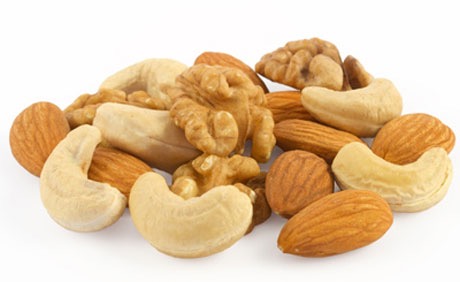
Harmful Oxalates In Spinach
Spinach is a most easily available, inexpensive, highly nutrition dense vegetable.
Spinach is an excellent source of vitamin K, vitamin A (in the form of carotenoids), manganese, folate, magnesium, iron, copper, vitamin B2, vitamin B6, vitamin E, calcium, potassium and vitamin C. It is a very good source of dietary fibre, phosphorus, vitamin B1, zinc and choline.
Spinach is rich in antioxidants known as alpha-lipoic acid, Vitamin C and A, and carotinoids that help us prevent or fight hypertension, diabetes, asthma, certain cancers and improves bone health.
But it is also high in sodium and oxalates. Sodium elevates blood pressure opposing the action of potassium.
Oxalates bind with iron and calcium, reducing their absorption. Excessive use of spinach can cause renal stones, anaemia and osteoporosis.
Oxalates can be reduced by soaking oxalate rich vegetables in water, boiling and adding citric acid rich lime juice, tomatoes and potatoes to these vegetables.
So it is prudent to include a wide variety of leafy vegetables in your regular food and not just spinach. All leafy vegetables are low calorie and nutrition dense.

Easily Affordable Super Fruit: Guava
All fruits are treasures of vitamins, minerals and antioxidants, some of them more abundantly endowed than others.
Guava is easily the most affordable super fruit, rich in Vitamins C and A and potassium and antioxidants.
Vitamin A and flavonoids like beta-carotene, lycopene (pink guavas are twice as rich as tomatoes in lycopene), lutein and cryptoxanthin are essential for optimum health. Vitamin A is essential also for keeping our mucous membranes and skin healthy and for protecting us against lung and oral cavity cancers.
Guava is the richest source of Vitamin C, other than Indian gooseberry. The sourness of the Indian gooseberry makes it difficult to eat them in large quantities. Citrus fruits like oranges and lime have less Vitamin C than guava.
Vitamin C is a powerful antioxidant, it helps repair and regenerate tissues and helps build immunity. It helps absorption of iron, helps reduce the intensity and duration of bouts of common cold, helps lower total cholesterol and LDL, the bad cholesterol, helps prevent heart disease and many cancers.
Potassium helps regulate our water balance and blood pressure, helps keep our nervous system, heart, kidneys healthy, helps prevent heart disease and strokes. It helps control anxiety and stress.
Guava is also a moderate source of B-complex vitamins such as pantothenic acid, niacin, vitamin-B6 (pyridoxine), vitamin E and K, as well as minerals like magnesium, copper, and manganese. Manganese is used by the body as a co-factor for the antioxidant enzyme, superoxide dismutase. Copper is required for the production of red blood cells.
So make it a point to eat them amply in their best season, viz. monsoon and early winter.
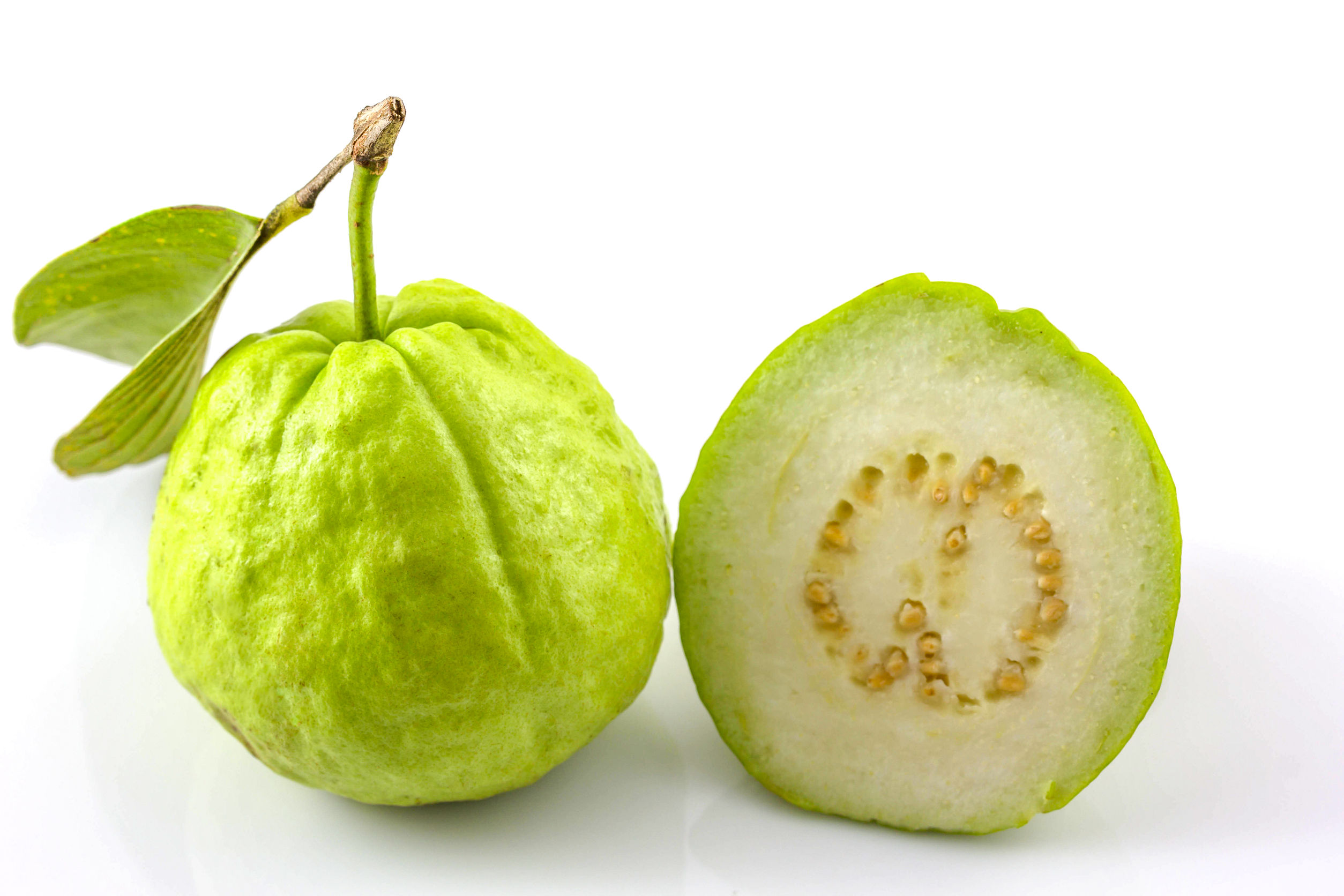
Rajgira (Amaranth Grain) Nutrition
Amaranth (rajgira in Marathi, ramdana in Hindi) is not exactly a cereal, as it is not a grass, it is otherwise similar in nutrition to cereals and can be used as cereals like wheat, jowar and bajri, only it is much superior in nutrition.
Rajgira flour can be used singly or mixed with other cereals to make chapatis or bhakri.
It is a super grain, superior to the heavily publicised, aggressively marketed and unnecessarily expensive quinoa. And it is a readily available, indigenously produced, Indian food grain, which is much cheaper than the imported quinoa.
It makes no sense in wasting foreign exchange on buying quinoa when the much superior Indian grain, rajgira, is readily available, for much less!
It provides 65 gm of carbohydrates, 7 gm of fats, 14 gm of proteins, 372 calories and 7 gm of fibre per 100 gm.
It is an excellent source of proteins, 14 gm per 100 gm of the grain, 9 of which are complete protein, that is, they provide all the essential amino acids, on par with proteins from animal products.
Thus milk and rajgira could help supply top quality proteins to purely vegetarian people.
It is also an excellent source of iron, calcium, manganese, magnesium, phosphorus and zinc, Vitamin B5 and B6, folate and fibre. It is also a good source of Thiamine (B1), Riboflavin (B2) and Niacin (B3) and potassium.
It is gluten free and hence it can replace wheat in the food of people who have gluten intolerance.

Rajgira (Amaranth) Leaves Nutrition
Amaranth leaves include a number of green and red leafy vegetables like ‘rajgira’ or ‘lal math’, ‘green math’, and ‘chavlai’.
They provide about 4 gm carbohydrates, 2 gm proteins, 1 gm fats and 23 calories per 100 gm.
Amaranth leaves are an excellent source of Vitamin A and manganese and a good source of calcium, magnesium, potassium, vitamin C, vitamin B6 and folate.
Vitamin A plays an important role in growth and development, in maintenance of immunity and good vision. It is also essential for maintaining the skin, mucus membranes and teeth enamel healthy.
Manganese is essential for keeping bones and the thyroid glands healthy and for regulating blood sugar and digestion. It boosts metabolism and immunity and reduces inflammation and PMS.
Calcium is essential to the health of our bones and muscles. It also helps regulate our blood pressure.
Vitamin C is a powerful antioxidant, it helps repair and regenerate tissues and helps build immunity. It helps absorption of iron, helps reduce the intensity and duration of bouts of common cold, helps lower total cholesterol and LDL, the bad cholesterol. It also helps prevent heart disease, strokes and many cancers.
Potassium helps regulate our water balance and blood pressure, helps keep our nervous system, heart and kidneys healthy, helps prevent heart disease and strokes. It also helps control anxiety and stress.
Amaranth group of vegetables are rich in a wide range of antioxidants including β-cyanins, phenolics, betalains, flavonoids, β-xanthins, carotenoids, vitamin C, and β-carotene those have a strong antioxidant activity, offering protection against heart disease and many cancers. The red varieties are richer in antioxidants.
Amaranth leaves are also rich in both soluble and insoluble fibre, helping in healthy bowel movement and lowering of cholesterol and preventing heart disease.
Like spinach, amaranth too is high in oxalates which bind with the calcium and iron in the amaranth leaves, reducing the absorption of the minerals in our intestines.
Like in spinach, we can neutralise oxalates by soaking and boiling the leaves first and then cooking them with lime juice, tomatoes and potatoes.


Folic Acid And Healthy Babies!
Three decades ago, I had advised a young paediatrician not to conceive on a low folate diet. She loved fish, ice creams and pastries and hated vegetables and fruits.
But she did conceive, only to miscarry soon. When the foetus was examined, it was found out that it had no brain development (anencephaly), caused by folate deficiency.
Sonography and modern day foetal anomaly detection tests were not yet there, nor the significance of folate in pregnancy adequately appreciated.
Folic Acid, the synthetic form of folate (Vitamin B9) is vital to the health of babies as the lack of enough of it can cause serious neural tube defects in babies very early in pregnancy, even before a lady knows that she is pregnant.
The neural tube is the part of the embryo from which your baby’s spine and brain develop. Deficiency of folate in the diet of a pregnant lady leads to spinal chord defects like spina bifida and defects in the brain like anencephaly (lack of development of the brain). It may also cause congenital defects like cleft lip and cleft palate and heart defects and preeclampsia, a severe hypertension problem in pregnancy.
Folate are also essential for the production, repair and functioning of DNA, our genetic map and they are a basic building block of cells. Getting enough folate is particularly important for the rapid cell growth of the placenta and your developing baby.
That’s the reason why every lady planning a pregnancy must take Folic Acid supplements at least a month before conception, even better for three months, for the healthy development of the foetus. Even the expectant father is also benefited by taking Folic Acid, it helps improve the sperm quality.

Sweet Corn, The Delicious, Healthy Snack!
Sweet corn is a cereal, like maize, wheat, rice, bajri, jowar, nachani and oats. While all other cereals provide around 325 to 375 calories per hundred gm, sweet corn provides just 86 calories per hundred gm. While all other cereals provide around 65 to 80 gm carbohydrates per hundred gm, sweet corn has just 18.7 gm carbohydrates per hundred gm. The only down side is, it has 3.27 gm per cent of proteins, compared to the 8 to 12 gm per cent of the other cereals.
It is rich in vitamins C and B, magnesium, and also has iron, protein and potassium. It is rich in lutein and zeaxanthin, two phytochemical antioxidants those promote healthy vision. Much of the vitamin C is lost in cooking sweet corn, but the antioxidants activity becomes more potent on cooking. Cooked sweet corn is also very rich in ferulic acid, a type of compound that helps fight cancer.
Sweet corn also provides us with 2 gm of fibre per hundred gm. It helps in keeping the beneficial bacterial flora in our intestines healthy and aids in digestion and helps in the bowel movement, preventing constipation. It is also said to aid weight loss.
Sweet corn is also low in glycemic index. So it is permissible for diabetics too.
Thus sweet corn is a delicious, wholesome package of taste and healthy nutrition, a quality snack, minus the added butter and chat salts.
Grated sweet corn cooked in milk and added with green chillis adds the goodness of milk, notably proteins and calcium to sweet corn and improves its nutritional value considerably and also makes it a delicious recipe!
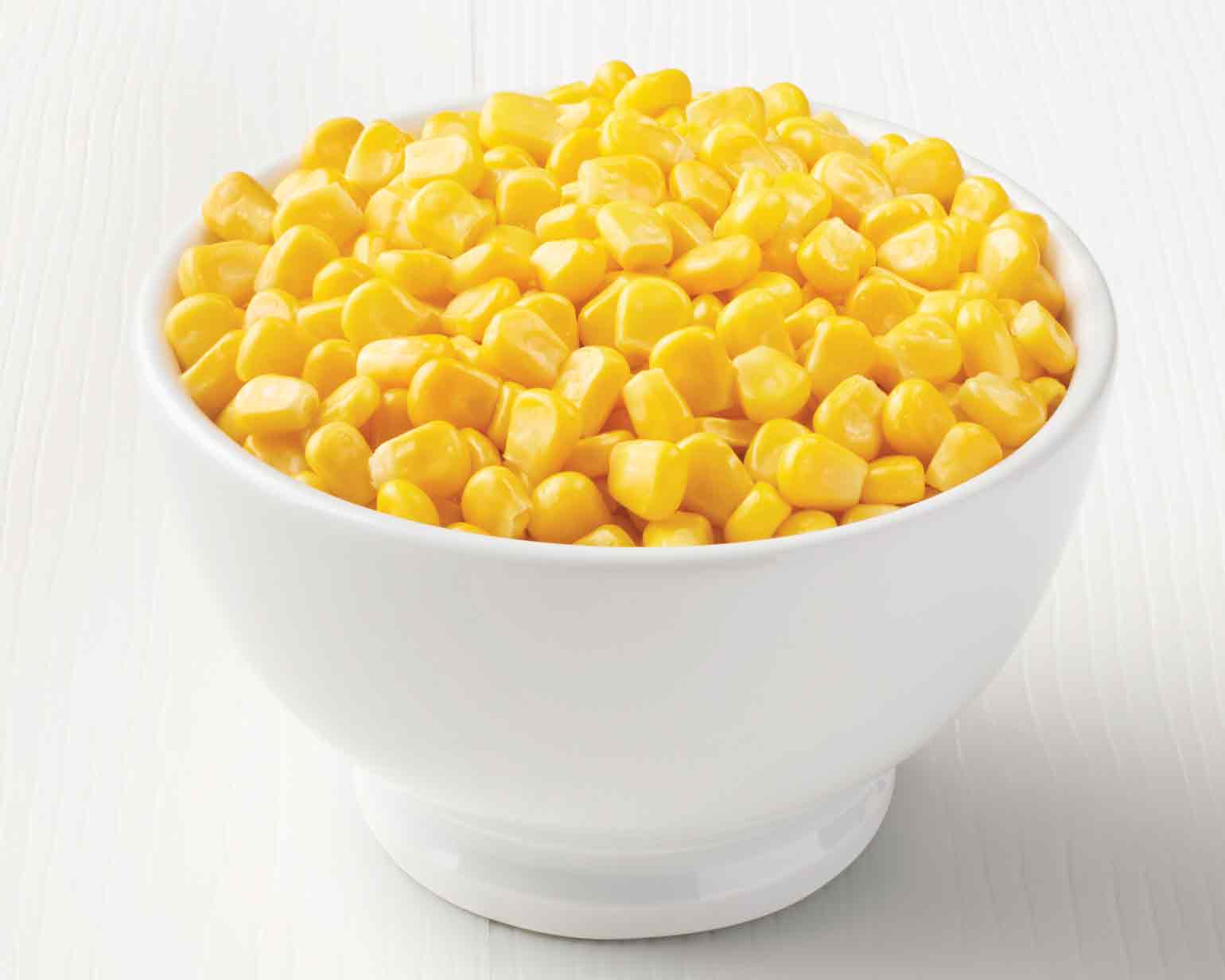
Also visit the article ‘Basics Of Nutrition’ on this website.
